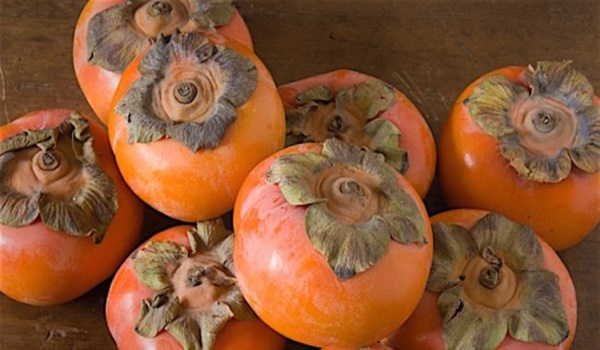Persimmon was also nicknamed “Apple of the Orient“ and is native to China. Afterward, it became a common ingredient in Japanese cuisine and is nowadays grown all over the world.
It is actually not a fruit, but a big, round, succulent berry, with a smooth, thin peel whose color can range from yellow to orange and even red. When ripe, persimmon is very sweet and parts of its flesh can turn brown.
It can be of two types, astringent and non-astringent, and while the first is rich in tannin before softening, that makes the fruit inedible the non-astringent persimmon loses the tannin sooner and the fruit is edible even when firm.
You can eat persimmons raw, juiced, or you can puree them and add them to smoothies.
They are highly nutritious, and are an excellent source of some rare phytonutrients:
- Cryptoxanthin, which provides their brilliant orange color
- beta carotene, lycopene, lutein, zeaxanthin, and cryptoxanthin, which prevent free radical damage and the development of cancer
- betulinic acid, which is an anti-tumor compound
- catechins, and gallocatechin, which have potent anti-inflammatory and anti-hemorrhagic properties
Persimmon is also abundant in potassium, iron, copper, calcium, manganese, and phosphorus, as well as vitamins A, C, and B vitamins.
According to Rachael Link, MS, RD, “one raw persimmon fruit contains approximately:
- 118 calories
- 31.2 grams carbohydrates
- 1 gram protein
- 0.3 gram fat
- 6 grams fiber
- 2,733 international units vitamin A (55 percent DV)
- 0.6 milligram manganese (30 percent DV)
- 12.6 milligrams vitamin C (21 percent DV)
- 0.2 milligram copper (9 percent DV)
- 270 milligrams potassium (8 percent DV)
- 0.2 milligram vitamin B6 (8 percent DV)
- 1.2 milligrams vitamin E (6 percent DV)
- 4.4 micrograms vitamin K (5 percent DV)
In addition to the nutrients above, persimmon fruit also contains some magnesium, thiamine, folate and phosphorus.”
Here are some of its health benefits:
- Persimmon has natural diuretic properties, due to the high calcium and potassium levels, and is recommended in the case of water retention
- It is an energy-dense food recommended for children and physically active people
- Since it is abundant in potassium and sugars, it relieves the symptoms of stress, tiredness, and fatigue
- It is high in vitamin C, which strengthens the immune system, and relieves the symptoms of colds and the flu, infections, and inflammation
- Persimmon is rich in water and fiber, so its laxative effects relieve constipation
- Its numerous antioxidants detoxify the body and cleanse the liver, neutralize toxins and prevent damage due to free radicals
- It lowers high blood pressure and prevents many heart conditions linked to hypertension
Additionally,
“Persimmons can be found at many grocery stores and farmers markets. They are also widely available at specialty Asian markets, often at a more affordable price.
Look for persimmons starting in October, which is when the persimmon season typically begins. They can usually be found through most of the winter and are often available well into January.”
Before consumption, make sure your persimmons are soft and ripe and eat them firm only if you are certain they are from the non-astringent variety. You should keep them at room temperature to accelerate their ripening.
Cut the fruit in half, peel off the skin and eat the pulp. You can also use persimmon to make delicious creams, jams, smoothies, sauces, and jellies. Enjoy!


